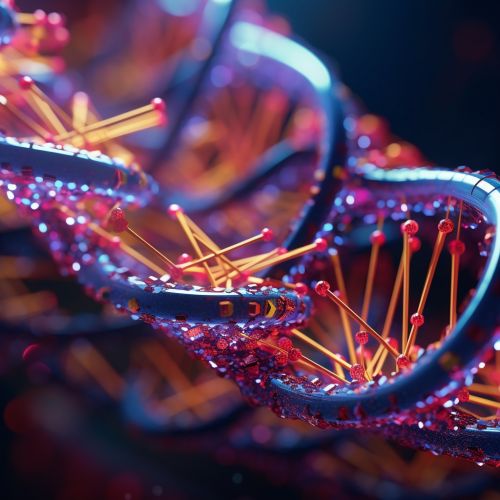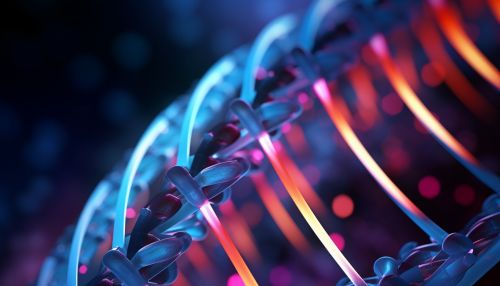Cas proteins
Introduction
Cas proteins (CRISPR-associated proteins) are a group of proteins that are integral to the functioning of the CRISPR (Clustered Regularly Interspaced Short Palindromic Repeats) system, a powerful tool for genomic editing. These proteins play a crucial role in the adaptive immune system of many bacteria and archaea, providing them with resistance against foreign genetic elements such as plasmids and phages.
Classification
Cas proteins are classified into two main categories: those involved in the adaptation phase and those involved in the interference phase of the CRISPR-Cas system. The adaptation proteins are responsible for acquiring new spacers from invading genetic elements, while the interference proteins are involved in the recognition and cleavage of the invading genetic elements.


Adaptation Proteins
Cas1
Cas1 is the most conserved protein in the CRISPR-Cas system and is involved in the acquisition of new spacers from foreign DNA. It functions as a nuclease, cutting the foreign DNA into fragments that can be incorporated into the CRISPR array.
Cas2
Cas2 is another protein involved in spacer acquisition. It is a metal-dependent endoribonuclease that cleaves pre-crRNA during the adaptation phase.
Cas4
Cas4 is a protein that is often associated with Cas1 and Cas2 in the adaptation module of the CRISPR-Cas system. It is a RecB-family nuclease that is thought to play a role in the processing of prespacers before their integration into the CRISPR array.
Interference Proteins
Cas3
Cas3 is a helicase-nuclease protein that is involved in the interference stage of the CRISPR-Cas system. It is responsible for the degradation of the target DNA following its recognition by the crRNA-guided surveillance complex.
Cas9
Cas9 is perhaps the most well-known of the Cas proteins, largely due to its use in the popular CRISPR-Cas9 system for genome editing. It is an RNA-guided endonuclease that cleaves target DNA at specific locations determined by the guide RNA.
Cas10
Cas10 is a protein found in type III CRISPR-Cas systems. It is a multi-domain protein that includes a HD nuclease domain, a cyclase domain, and a Palm domain. The Palm domain is responsible for the synthesis of cyclic oligoadenylate (cOA), a second messenger molecule that activates ancillary ribonucleases.
Function in CRISPR-Cas Systems
Cas proteins are essential for the functioning of the CRISPR-Cas system. In the adaptation phase, Cas1 and Cas2 (and sometimes Cas4) work together to acquire new spacers from invading genetic elements. These spacers are then incorporated into the CRISPR array, where they serve as a 'memory' of past infections.
In the interference phase, Cas proteins are involved in the formation of the surveillance complex, which includes the crRNA and tracrRNA. This complex scans the cell for the presence of matching sequences in foreign DNA. When a match is found, Cas proteins such as Cas3 or Cas9 cleave the target DNA, thereby neutralizing the threat.
Applications
Due to their ability to precisely target and cut DNA, Cas proteins have been harnessed for use in a variety of applications. The most well-known of these is genome editing, where the CRISPR-Cas9 system has revolutionized the field by allowing for precise, targeted changes to the genome. Other applications include gene regulation, base editing, and prime editing.
